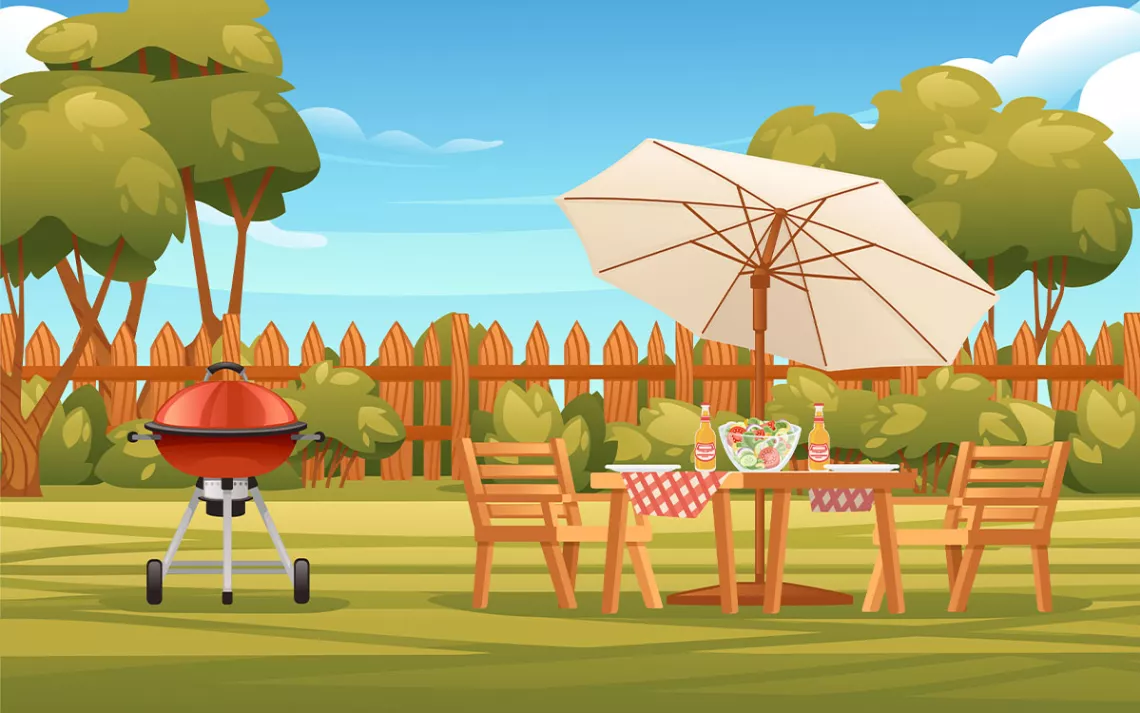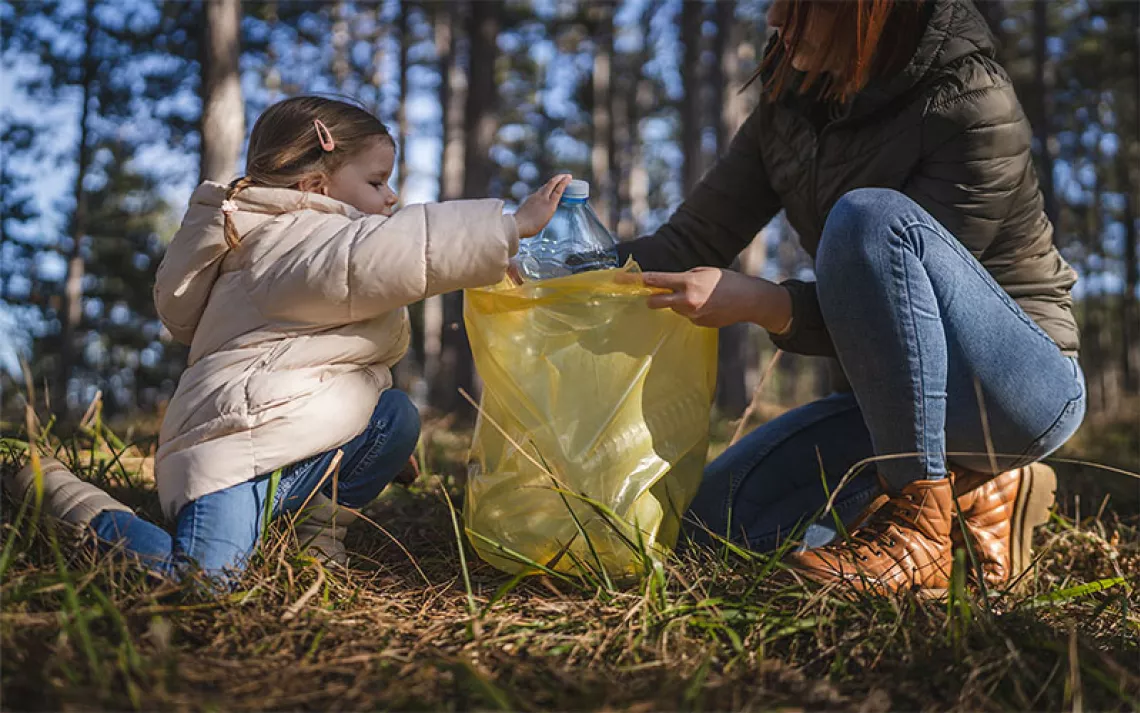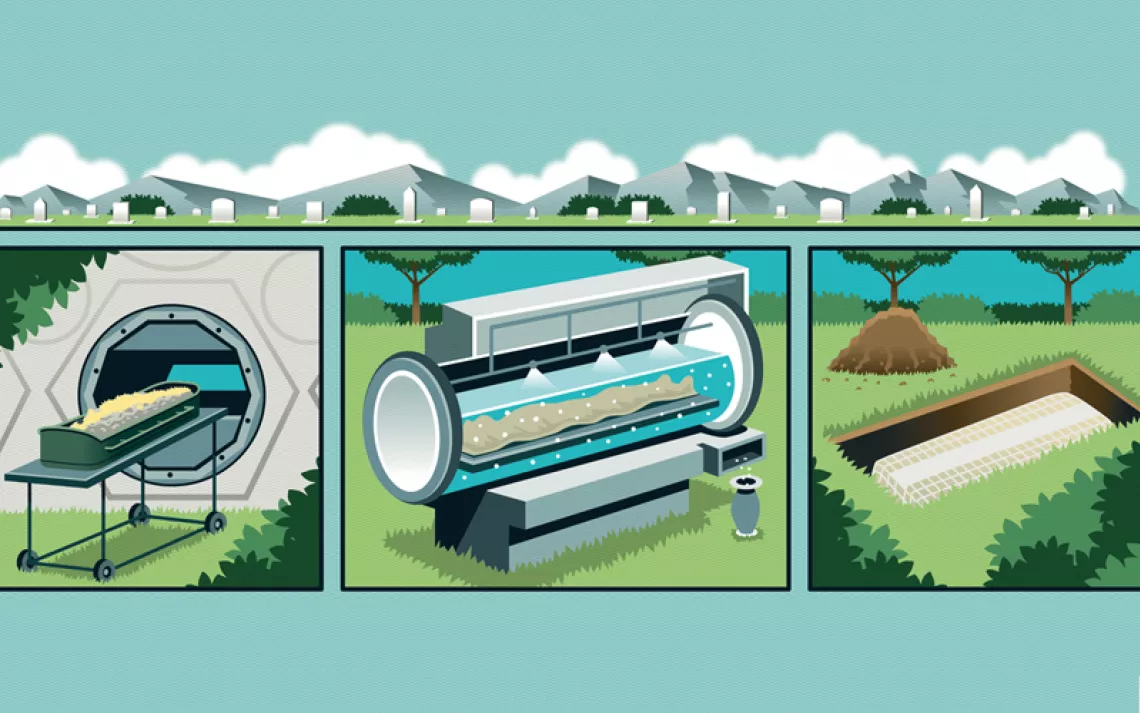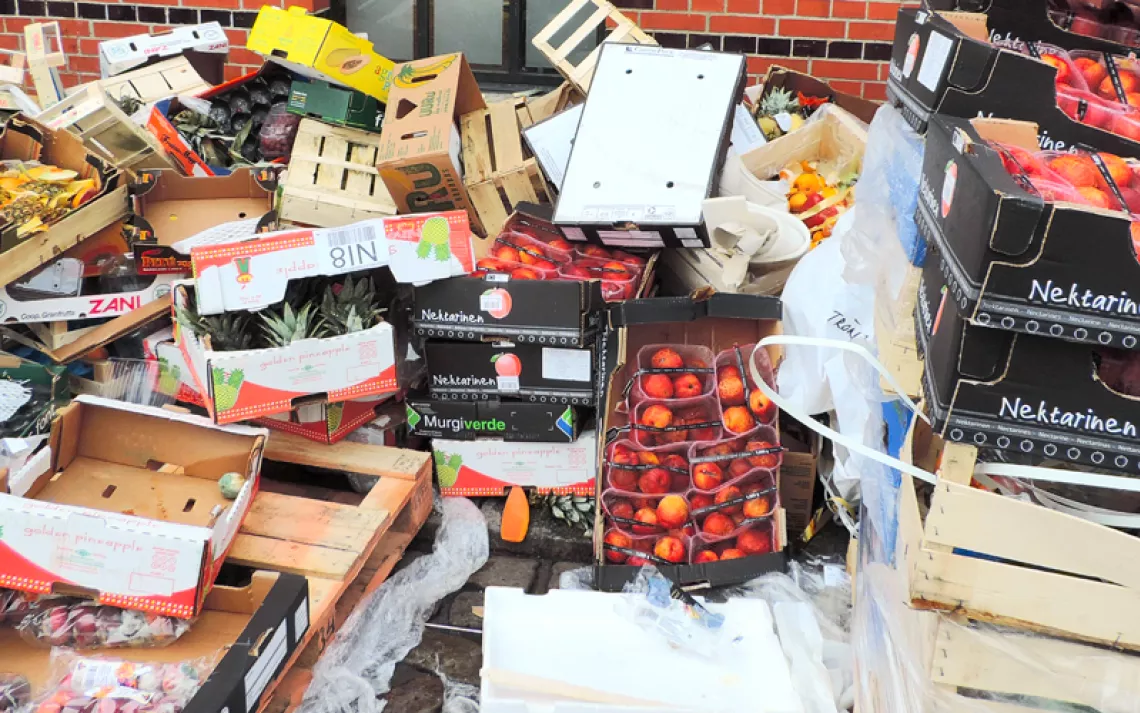Where Can I Recycle Propane Gas Cylinders and Tanks?
Some tips on how to green your grill

Illustration by Alfadanz/iStock
Hey Ms. Green!
Can we recycle empty propane gas canisters? If so, where?
—Brenda, Kearneysville, West Virginia
That’s a great question to ask now that summer is here and you may be hosting (or going to) a party outdoors.
An important first step is to make sure that the tank is empty. Compressed propane gas cylinders and tanks might seem to be spent, but they could have flammable gas still inside. That hazardous waste can cause fires and is illegal to put in any landfill or recycling bin. When in doubt, you always have the option to bring it to a household hazardous waste collection site, but there are other options that can save time and money.
First, let’s clear the air on all the names for propane canisters. For this article, I’ll use cylinders for anything that’s one pound (16 ounces) or less. And I’ll refer to anything larger as a tank.
Save money with refillables
You can save money in the long run if you get refillable cylinders and tanks. They cost a lot less to refill compared with those that are single use. Also, when it’s time to recycle or safely dispose of any cylinder or tank, you might first need to pay a professional to depressurize them and remove remaining gas.
You’ll also save on taxes. “Taxpayers pay up to $65 to recycle or safely dispose of a one-pound propane cylinder,” Nate Pelczar, director of administration, California Product Stewardship Council (CPSC), told me. “That’s how much taxpayers pay in Burbank, California. In rural areas, they can pay $30 a cylinder. So we need more producer responsibility laws to make manufacturers pay.”
Free refillable propane cylinders
See CPSC’s ReFuel Your Fun maps for all your one-pound cylinder needs. Get cylinders and refills, sometimes for free there. Their map also lists parks where you can recycle any brand of one-pound refillables for free. You can also buy brands at your local store like Little Kamper, Flame King, and FuelKeg.
Refillable propane tanks
The greenest refillable tanks I could find are Ignik’s Gas Growler 3.8-to-10-pound capacity propane tanks. They’re packed and shipped plastic-free with repurposed shipping boxes and paper. If you need other sizes, Flame King sells quarter-pound to 1,000-pound refillable tanks.
Why only refill refillables?
You can get prison time for up to five years and get fined up to $500,000 for refilling single-use cylinders and tanks that aren’t labeled “refillable,” according to Pelczar. Refills are only allowed for US Department of Transportation (DOT)-4BA refillables. Single-use cylinders are also called DOT-39 cylinders.
Why have professionals refill?
Some people have died or been injured refilling refillable and single-use cylinders and tanks themselves. So let the pros do it for you.
How to safely store propane
Store the tanks upright outside in a well-ventilated area, and away from ignition sources like air conditioners and pool heaters. “Store them in a cool, dry place. Cover them to prevent dents and rust. That’ll make them safer to exchange, get refills, or transport to recycle or safely dispose of them,” Pelczar said.
What to do before you recycle or safely dispose of propane
Double check that you actually need to recycle or dispose of them. First, make sure they’re empty. If your tank doesn’t have a gauge, weigh it. Look for numbers etched into the handle next to “TW,” which stands for tare weight. That’s the weight of your tank when it’s empty. Weigh the tank and subtract the tare weight from its current weight.
If they’re not empty, here’s how to tell if you can still safely use them: Find the manufacturing or requalifying date. On cylinders, the manufacturing date is usually on the side near the bottom. Propane tanks have the manufacturing date on their handle. The requalification date (if it’s been requalified) will be somewhere under it. Tanks must be requalified every five to 10 years depending on the markings. It might be greener to get a licensed propane dealer to requalify the tank so you can safely use it.
Where to recycle or safely dispose of propane
Not all propane exchange, recycling, and hazardous waste programs will recycle all parts of your cylinder or tank. Some might not recycle the scrap metal. For example, I emailed Amerigas and Blue Rhino. Their websites say if you buy their tanks, you can exchange any brand and they’ll recycle them. I asked if they disassemble them for recycling or put them in the landfill. They didn’t reply.
Here are what might be greener places to recycle or dispose: For one-pound cylinders, recycle them at national parks like Yellowstone, Yosemite, and Bryce Canyon, or a location on ReFuel Your Fun’s California map. Also see Earth911, or ask your local government waste agency or scrap metal recycler.
Get stores and lawmakers to promote refillables
Here are tips from CPSC. Ask local stores to sell only refillables and offer a propane exchange and recycling program. Email CPSC for tips to get your city, county, or state government to create laws promoting refillable one-pound cylinders. If you’re in California, tell your assembly member to support a transition bill outlawing one-pound single-use cylinders (SB-1280).
Safer and greener ways to grill
I could grill a lot of experts on that for another column. (Ask me!) The short and sweet version is, if you can, go electric!
 The Magazine of The Sierra Club
The Magazine of The Sierra Club



